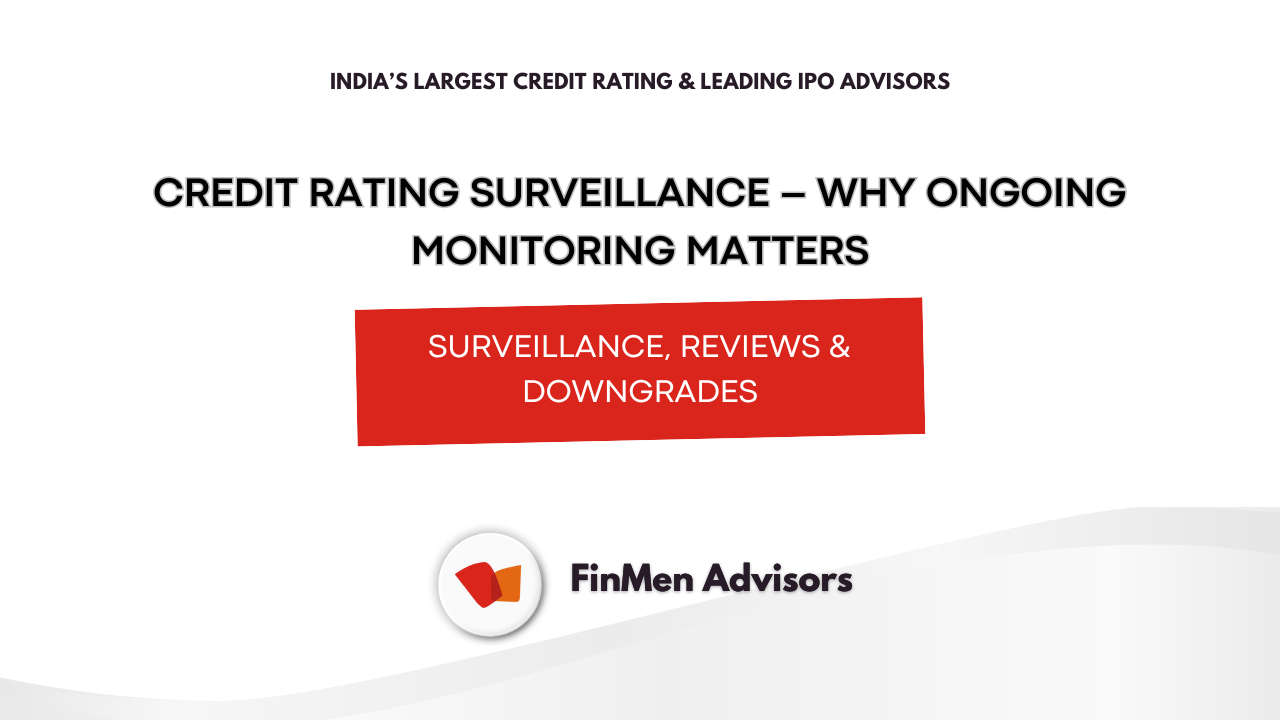Introduction
A credit rating is not a one-time exercise. Business conditions, financial performance, and industry dynamics evolve constantly—and so must credit ratings. This is where credit rating surveillance comes in. It is the process by which rating agencies continuously monitor rated entities and update ratings to reflect current realities. For companies and investors, understanding the importance of surveillance is essential, as it directly impacts access to capital, borrowing costs, and market credibility.
What Is Credit Rating Surveillance?
Credit rating surveillance refers to the ongoing review of an issuer’s creditworthiness after the initial rating has been assigned. Unlike the first assessment, which provides a snapshot in time, surveillance ensures the rating remains relevant and accurate in light of new information.
Key activities include:
- Regular Review: Scheduled (annual/semi-annual) updates of financial and operational performance.
- Event-Driven Monitoring: Assessing impact of major developments such as mergers, acquisitions, regulatory changes, or defaults.
- Market and Industry Tracking: Incorporating macroeconomic trends, sectoral risks, and shifts in the competitive landscape.
Why Ongoing Monitoring Matters
1. Dynamic Business Environment
Companies face changing market conditions, raw material costs, foreign exchange fluctuations, and policy changes. Surveillance ensures these shifts are factored into the rating.
2. Investor Confidence
Regular updates provide assurance to lenders, bondholders, and investors that the rating remains reliable. This transparency builds trust and credibility in capital markets.
3. Early Warning System
Surveillance can flag deterioration in credit quality before it becomes critical, allowing issuers and investors to take timely corrective action.
4. Access to Capital
Consistent surveillance-backed ratings help businesses secure funds at competitive terms, as investors are more comfortable lending to companies with actively monitored ratings.
5. Regulatory Requirement
In India, SEBI mandates credit rating agencies to undertake surveillance of all outstanding ratings, ensuring accountability and protection for investors.
The Process of Credit Rating Surveillance
- Periodic Review
- Agencies review updated financials, management discussions, and industry trends.
- Agencies review updated financials, management discussions, and industry trends.
- Event-Based Review
- Ratings are reassessed if significant events occur (e.g., large debt issuance, change in ownership, defaults).
- Ratings are reassessed if significant events occur (e.g., large debt issuance, change in ownership, defaults).
- Committee Evaluation
- Just like the initial rating, surveillance decisions are taken by a rating committee for objectivity.
- Just like the initial rating, surveillance decisions are taken by a rating committee for objectivity.
- Communication to Issuer
- The issuer is informed of the surveillance outcome before publication.
- The issuer is informed of the surveillance outcome before publication.
- Publication and Monitoring
- Ratings are made public and continue to be tracked until withdrawal or repayment of the rated obligation.
- Ratings are made public and continue to be tracked until withdrawal or repayment of the rated obligation.
Implications for Businesses
- Positive: An upgrade after surveillance can lower interest costs, improve market perception, and support expansion.
- Negative: A downgrade, often due to weak financials or governance issues, can raise borrowing costs and restrict capital access.
- Neutral: In many cases, the rating remains unchanged but validated, which still strengthens investor trust.
Conclusion
Credit rating surveillance is more than a compliance requirement—it is a critical mechanism that ensures ratings reflect real-time credit risk. For businesses, it offers both opportunities and challenges, depending on how well they manage performance and disclosures. For investors, it provides a transparent and reliable guide to risk.
At FinMen Advisors, India’s Largest Credit Rating Advisory and Leading IPO Advisory firm, we help companies prepare for surveillance reviews, highlight their strengths, and engage effectively with rating agencies to ensure fair and accurate representation in ongoing evaluations.


